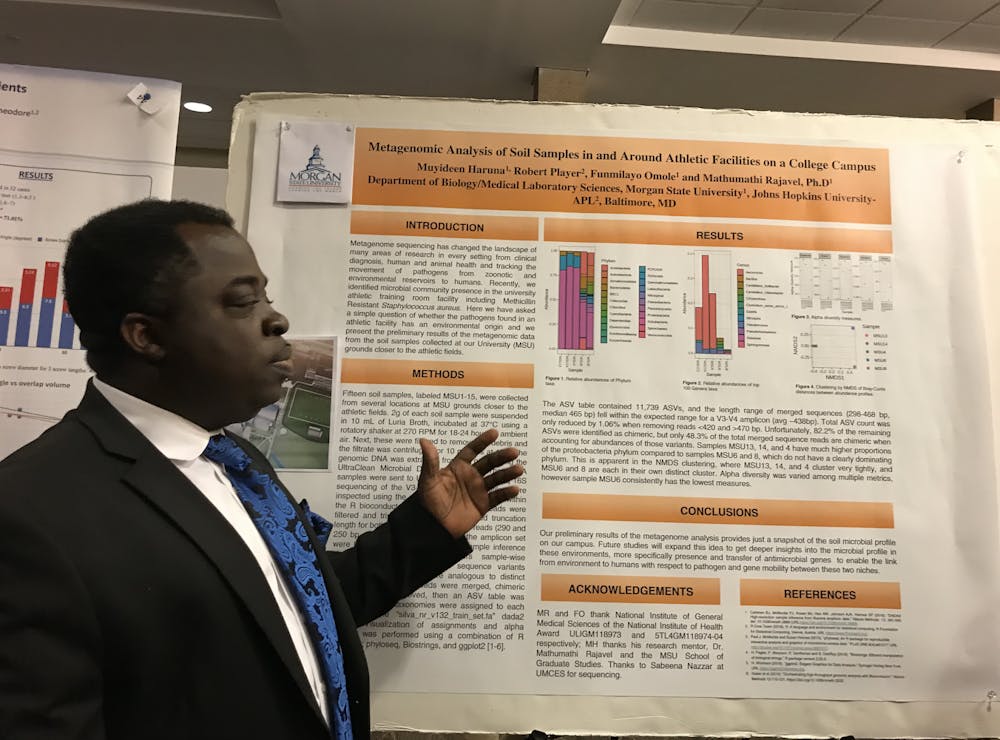The Hopkins Diversity Postdoctoral Alliance Committee hosted its fourth annual Excellence in Diversity Symposium on Nov. 7 at the med campus.
The organization is a branch of the larger, nationally recognized Diversity Postdoctoral Alliance Committee (DPAC). Its goals include creating a network for postdoctoral scholars from historically underrepresented groups and actively working to help members achieve both professional and academic excellence.
The symposium included both oral and poster presentations, covering a vast range of research disciplines. The presenters at the symposium ranged from high school students to postdoctoral research fellows. The participants submitted abstracts and prepared a poster presentation for a general academic audience.
Exceptional abstracts were chosen for oral presentations. At the end of the conference, a certificate of excellence was given to the two highest ranked posters.
Jada Domingue, a postdoctoral researcher and co-chair of the Hopkins chapter of DPAC, explained the goal of the symposium in an interview with The News-Letter.
“The biggest thing we hope people take away from today is that there are a bunch of amazing underrepresented scholars right here at Hopkins specifically or in the surrounding area,” Domingue said.
Jade Doge, a senior at Morgan State University, created a poster presentation on work she conducted this past summer during an internship at the National Institute of Health. She looked at different treatment options for glioblastoma, one of the most common primary malignant brain tumors.
“The patients only survive about 15 months even with traditional treatments, but there are new emerging treatment options,” Doge said, as she pointed to her poster outlining the advantages of using the PRMT5 inhibitor and trametinib as novel therapeutics.
The experiments she has conducted so far have proven successful in decreasing glioblastoma cell viability. She believes this is due to the inhibitor blocking the signalling cascade involved in forming glioblastoma. Doge hopes to take her current in vivo experiments and implement them in animal models.
This was her second year presenting at the symposium. She said that she was happy to return.
“This is a symposium that promotes diversity in the field when it is needed,” Doge said.
Other projects aligned with the symposium’s theme of diversity. Researcher Adham M. Khalafallah found that foreign medical graduates are an integral component of American neurosurgery departments.
As a postdoctoral research fellow in the Neurosurgery department at Hopkins and recent medical school graduate from Egypt, he pursued this topic to help make other foreign graduates aware that they too can be successful in the U.S.
In his study, data was extracted from a database of 117 graduated neurosurgeons from 1960 to 2018. The data highlighted that foreign medical graduates who begin their residency in the U.S. have comparable achievements in neurosurgery departments to American graduates.
Khalafallah also found it interesting to learn that the field of neurosurgery is male-dominated. He did mention that American medical graduates do have a higher h-index, which ranks how impactful one’s research is, over foreign graduates. However, he added that foreign graduates participate in research at the same or higher rate than Americans, and their research is important too.
“Coming from different backgrounds or different research opportunities may be hindering for the foreign medical graduates, but once you put them in the same environment they produce and are equally productive,” Khalafallah said in an interview with The News-Letter.
Muyideen Haruna, a PhD student at Morgan State University, took five soil samples on the Morgan State campus grounds and analyzed them to determine whether the soil was foreign, meaning that it was brought in from somewhere else.
Haruna stated that his complete metagenomic analysis of soil samples around the campus concluded that the soil was in fact not native to the area and contained various new bacteria. He hopes to bring his research to other college campuses to determine the composition of their soil and learn about other bacterial species and their role in pathogenesis.
The symposium reached a diverse audience of high school students, undergraduates, graduate students and postdoctoral fellows.
It was Domingue’s second year as a co-chair and organizer of the event and her third year attending. She believes that continuing this symposium is vital to build confidence in younger trainees and give faculty and executives a chance to recognize their achievements.
“They are doing fantastic work, and they should be recognized for their work because it is just as excellent as anyone else’s work,” she said.





